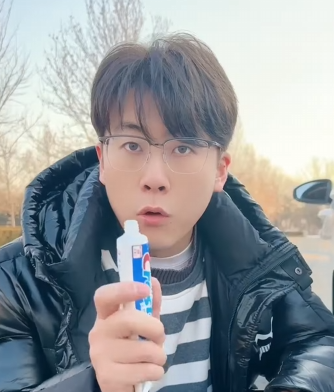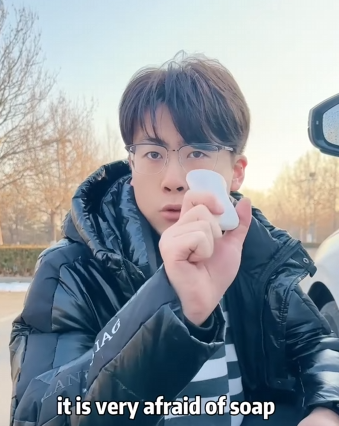
Owning a car is a privilege, but it often comes with the burden of unexpected problems. Whether it’s a stubborn engine light, a squeaky brake, or a mysterious noise, the first instinct for many drivers is to take their car to a mechanic. While professional help is sometimes necessary, you’d be surprised by how many common car issues you can solve without spending a dime. With a little knowledge, creativity, and resourcefulness, you can troubleshoot many problems yourself and save money in the process.
In this article, we’ll share practical, zero-cost strategies for diagnosing and fixing common car problems. You don’t need fancy tools or expensive equipment — just a willingness to learn and a little time. Let’s dive in!
1. Start with a Thorough Inspection
Many car problems can be solved simply by paying close attention. Before you think about replacing parts or taking your car to the shop, give it a good inspection. Look for obvious issues such as loose wires, cracked hoses, or fluid leaks. Sometimes a loose battery terminal or a dirty connector can cause your car not to start, which can be fixed by simply tightening or cleaning them.
A flashlight and a few minutes of patience are often all you need to discover small problems that don’t cost anything to fix. For example, if your headlights are flickering, the issue might not be with the bulb or wiring but a loose connection that just needs to be secured.
2. Learn Basic Car Diagnostics
Modern cars come with an On-Board Diagnostics (OBD) system. Even if you don’t own an expensive OBD scanner, you can still access basic codes by visiting a local auto parts store. Many stores offer free code scanning as a service. This means you can find out why your “Check Engine” light is on without paying a mechanic.
Once you have the code, search online for the problem. Many solutions, such as cleaning a sensor or tightening a gas cap, don’t require any money. A loose or faulty gas cap is one of the most common reasons for a check engine light, and simply tightening or replacing it (if you have an extra one at home) solves the issue instantly.

3. Use Free Online Resources
The internet is a goldmine of car repair information. Websites like YouTube, Reddit’s r/Cartalk, or forums dedicated to your specific car model are full of step-by-step guides and video tutorials. You can watch how other people solved the same problem and replicate their process.
For example, if your car’s air conditioner stops working, it could be a clogged cabin air filter. Cleaning it often takes less than 10 minutes and requires no special tools. By following a free tutorial online, you can fix such problems without spending a single cent.
4. Clean Instead of Replacing Parts
Sometimes, parts of your car may look broken or worn out but only need a good cleaning. Dirty sensors, clogged filters, or carbon buildup can cause poor performance or strange noises. For example:
- Mass Air Flow (MAF) Sensor: Cleaning it with a soft brush or a rag can restore engine performance.
- Battery Terminals: A simple wipe with a dry cloth or a mix of baking soda and water (free if you have these at home) can eliminate corrosion.
- Headlights: Foggy headlights can be cleared with toothpaste — yes, the same one you use to brush your teeth!
Instead of rushing to buy replacements, try cleaning first. It costs nothing and often solves the problem.
5. DIY Tire Care
Tires are one of the most important parts of your car, and neglecting them can lead to costly repairs. Luckily, basic tire care doesn’t require spending any money.
- Check Tire Pressure: Most gas stations offer free air pumps. Keeping your tires properly inflated improves gas mileage and prevents uneven wear.
- Tire Rotation Tip: If you have a jack and some time, you can rotate your tires at home to extend their life.
If you have a slow leak, sometimes the cause is a tiny rock or debris stuck in the tire. Removing the object and reseating the tire bead can sometimes fix the leak temporarily until you can afford a professional repair.
6. Use Household Items for Minor Fixes
Many household products can be used for small car problems. For example:
- Toothpaste for Headlights: As mentioned earlier, toothpaste can polish cloudy headlights.
- Cooking Spray for Squeaky Doors: A little spray on door hinges can stop annoying squeaks.
- Baking Soda for Odors: If your car smells bad, sprinkle baking soda on carpets and seats to neutralize odors.
These tricks save money and make your car feel newer without spending a dime.
7. Take Advantage of Free Community Resources
Some local communities and auto clubs host free car care clinics where volunteers inspect your car and even help with minor repairs. Check if your area has such programs — they can help you diagnose issues for free.
Additionally, some vocational schools or colleges with automotive programs offer free or low-cost services performed by students (supervised by professionals). This can save you a lot of money while helping students gain experience.

8. Prevent Problems Before They Start
The best way to avoid costly repairs is by taking care of your car with regular maintenance — most of which you can do for free.
- Check Fluids: Pop your hood and check engine oil, brake fluid, and coolant levels regularly. If they are low, top them up with any spare fluid you already have at home.
- Keep Your Car Clean: Dirt and grime can corrode parts over time. Regular washing with water (no need for fancy soap) can prevent damage.
Preventative care costs nothing but can save you hundreds of dollars in future repairs.
9. Borrow Tools from Friends or Libraries
Did you know some libraries or community centers let you borrow tools for free? Many auto parts stores also have a “loan-a-tool” program where you can borrow tools, use them for your repair, and return them without paying.
This allows you to perform more complex repairs like brake pad replacement or changing spark plugs without investing in expensive equipment.

10. When to Know It’s Beyond Your Skill
While many car problems are easy to fix on your own, it’s important to recognize when a repair is beyond your expertise. Trying to fix major engine or transmission issues without proper tools or knowledge can cause more damage. In these cases, focus on what you can do for free, like diagnostics or cleaning, before visiting a mechanic.
Final Thoughts
Solving car problems doesn’t always mean spending money. By learning basic maintenance skills, using free resources, and being creative with household items, you can handle many issues on your own. From tightening loose parts to cleaning sensors, these small steps can keep your car running smoothly without draining your wallet.
The next time your car gives you trouble, take a deep breath, grab a flashlight, and start investigating. You might be surprised at how much you can fix — for free!


